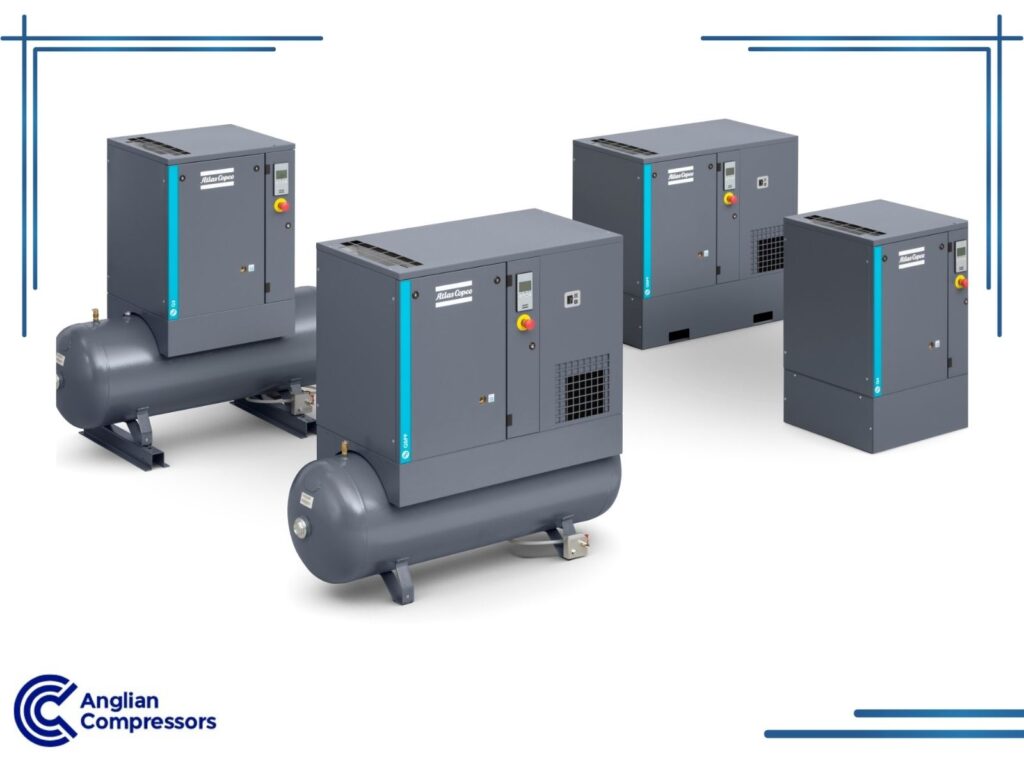Different Types of Air Compressors and Their Uses
Air compressors are widely used in manufacturing, construction, machine-working generally, and elsewhere across multiple industries. They’re utilised to compress air, gasses, and occasionally fluids. Of these, fluid is rarely compressed because, broadly speaking, it doesn’t tend to compress to a satisfactory compression ratio.
Some compressors will compress gasses or air at a certain pressure level or are for specialist applications. For example, diaphragm compressors deliver low-volume, compressed air that’s very clean for laboratories and healthcare sectors. Rotary lobe compressors are another type that produces a low pressure at high volume, ideal for positive displacement and centrifugal blowers.
Air compressors needing to deliver a steady flow of high-pressure, high-volume compressed air must be fit for this task. Not every compressor meets this need. Internally, air compressors are split across two categories: positive displacement and dynamic displacement types. Below, we discuss 4 of the air compressor types that fit into either one of these categories.
Table of Contents
Positive Displacement Compressors
The positive displacement compressor category includes both reciprocating compressors and rotary screw types.
Both types have a cavity where the air is stored, which is gradually compressed down to increase the air pressure level. While exactly how this is performed differs between positive displacement compressor types, the outcome is similar.
Rotary Screw Compressors
The Rotary Screw compressor is a popular way to compress air. Indeed, many of the air compressors in the Atlas Copco (that we supply across all of our Service locations) product range incorporate a rotary screw design within their internal structure. Depending on the machine itself, it may operate without using oil or benefit from lubricating oil.
Two rotors (screws) are positioned in opposite directions to create a positive pressure build-up from the air contained inside. The generated heat is typically well managed, allowing for non-stop operations or individual projects lasting several hours at a time. This type of air compressor uses powerful motors with a capacity of several hundred horsepower, where necessary.
Many Atlas Copco variable speed drive air compressors that Anglian Compressors supply and install incorporate a rotary screw design.
Reciprocating Compressors
Reciprocating compressors are sometimes deployed on smaller construction sites, but more often are put to use on home projects, such as when adding a garage or a third bedroom to an existing property. The air generated by these units can operate power tools that rely on compressed airflow to work and/or avoid overheating.
These types of compressors produce pressured air through a single-stage or multiple-stage operation. The main compressed air mechanism is a piston within a cylinder that provides compression and moves the air into a restricted area.
This mechanism is more complex than others. It requires oil to keep it operating smoothly and avoid overheating. The multi-stage versions produce higher air pressure levels than a single stage is capable of. However, reciprocating compressors aren’t capable of providing continuous air pressure for workplace applications that require it.
Dynamic Displacement Compressors
There are multiple types of dynamic compressors. The most popular are the Axial and the Centrifugal compressors.
Dynamic compressors aim to produce kinetic energy. The compressed air process is often implemented to produce pressure, to drive engine horsepower, rather than to output compressed air for manufacturing, use with power tools, etc.
With dynamic compressors, fan blades spin and suck in air from the surrounding area. This is captured and retained in a small space to create positive pressure. Ultimately, the horsepower created from these types of compressors is impressive, but that comes at a higher cost.
Axial Compressors
People working in construction may have never heard of Axial compressors. This is because they’re considerably more expensive, sizeable, and best suited for larger applications such as ships, or the aerospace industry where bigger capacities matter.
Axial compressors are highly efficient but aren’t as practical on the manufacturing or production floor.
Centrifugal Compressors
The Centrifugal compressor relies on pulling ambient air into its diffuser as a way to create energy. Room temperature – or cooler air, is required for input. The internal air compression goes through multiple stages, with each one increasing the pressure achieved.
Relative to their size, these compressors use a high amount of horsepower for their installed footprint. Some do not require oil to operate, while others do. They’re mostly found in manufacturing plants, such as chemical or steel producers.
Picking the Most Appropriate Air Compressor
While there are many types of compressors, including a variety of air compressors specifically, what’s most important is to choose the one that meets your business need.
Many compressors do an admirable job. However, it won’t be appropriate if they cannot produce accessible compressed air, won’t run more-or-less continuously or over multiple hours at a stretch, or aren’t energy efficient.
Compressing air
The amount of possible air compressed depends on the category and type of air compressor. They’re not all built the same, and the technological advancement between compressor equipment brands isn’t the same either.
Comparing the BAR pressure/PSIG and litres per second data is essential to understand what an air compressor is capable of. Indeed, compressor units must be chosen based on suitability to the task, and meeting the necessary compressed air volume required. This is where an air audit from Anglian Compressors is so useful.

Size Footprint
Some air compressors are huge. They require considerable space but also pull in air from where they’re located as part of their process. Therefore, their installation location must be appropriate to how they operate.
For example, variable speed drive air compressors from Atlas Copco have a smaller footprint. They sit neatly on a platform, so they’re raised slightly above the floor but only need a modest amount of square footage.
Flexible Usage
Flexible usage is important for an air compressor. Some produce small volumes of compressed air for a limited time, and then need to be shut down.
Fixed speed air compressors ideally need to run continuously, costing more to operate long-term.
Variable speed drive air compressors don’t usually operate continually. Instead, they can be used for different projects, with specific volumes and pressure levels as required for that project or shift. As a result, they’re less expensive to operate while offering flexible usage to meet changing needs.
Get in Touch
Talk with our highly knowledgeable team at Anglian Compressors. We can discuss your air compressor requirements and recommend the best setup for your business.
Contact us below.


